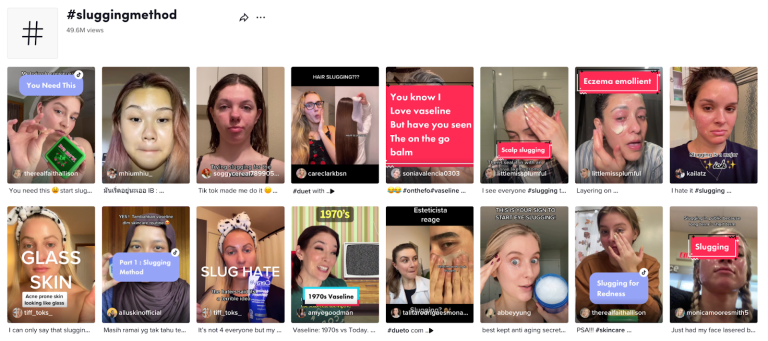You might expect electronics brands to naturally align with ecommerce environments — after all, both are inherently digital. Traditionally, however, there’s been a disconnect between consumer electronic sales and agile online markets.
But what’s happening with ecommerce electronics trends right now?
Well, for one thing, the rise of online commerce has slowly shifted the massive floor space of big-box retailers as the go-to electronics source from asset to liability. The pandemic played a substantive role in this result, as 61% of consumer electronics shopping happened online during the COVID-19 crisis as reported by Media Play News.
Consumers used to head to stores and browse at their leisure, check out the latest gadgets, and explore aisles upon aisles of PCs, laptops, and more. However, as noted by The Verge, for example, February 2021 marked the end of the long-running chain, Fry’s Electronics.
The closure of Fry’s and similar retailers point to an inevitable shift in shopping habits. Powered by always-on connections, omnichannel options, and mobile-responsible applications, consumers have embraced ecommerce electronics shopping at scale.
But what does this mean for electronics brands looking to make the most of a changing market and succeed as post-pandemic frameworks emerge? Here are three of the top ecommerce trends for electronics brands in 2021.
Current Conditions
As noted above, the pandemic gave consumers a push to prioritize online electronics spending. This trend isn’t brand new, but has actually been a slow build.
Consider the growing appeal of Cyber Monday promotions. These sales lure consumers to purchase all types of products — including electronics — entirely online.
Evidence of this? ABC reports that Black Friday only took in $9 billion in 2020. However, ecommerce efforts generated $10.8 billion in sales according to CNBC, therefore outpacing its brick-and-mortar counterpart.
In fact, Finances Online notes that most of the top-selling items during Cyber Monday 2020 were electronics, ranging from video games to laptops and television peripherals.
This trend is expected to continue year over year as more retailers embrace ecommerce and third-party sellers — like Amazon — make even greater electronics inroads.
In practice, this means electronics brands now face an increasingly competitive online market that isn’t simply driven by price. Consumers are looking for the best shopping experience from start to finish. To stand out from the competition, electronics retailers must ensure they’re prepared to make the most of emerging trends.
1. Plug Into Personalization
Forty-four percent of consumers say they’ll shop elsewhere if brands don’t offer some type of personalization, according to a study by Twilio Segment.
This is no less crucial in the online electronics space. With so many devices and models to choose from, it’s understandable that buyers may feel overwhelmed and too uncertain to spend.
Consider devices such as Google Chromebooks. While the search giant does have some branded Chromebook devices, most are manufactured by other retailers and use the Chrome operating system (OS). As a result, price points vary significantly from $200 for more basic models to more than $1000 for high-end machines.
What Brands Should Do
Brand should take advantage of personalization options to increase the likelihood of conversion. This can be achieved by:
- Using smart content or artificial intelligence (AI) algorithms; and
- Combining user preferences and purchase histories to provide direction.
2. Green Is Your Color
Sustainability is also a priority for ecommerce purchasers. According to Environment and Energy Leader, almost 75% of consumers are now willing to pay more for sustainable packaging.
Consumers are also looking to keep electronic devices longer. The Wall Street Journal reports that the average time for smartphone replacement has shifted up from 2.39 years to 2.83 years as buyers look to get more for their money before making the switch.
As a result, ecommerce electronics trends centered around sustainability make it critical for brands to be purposeful with packaging and manufacturing decisions. They should also be sure this information is shared with potential buyers.
What Brands Should Do
While too much coverage on sustainability or related efforts may give off the impression that brands are trying too hard, it’s worth making this data prominent in a few areas. Consider the following options:
- Provide a brief summary of your brand’s sustainability efforts on any relevant product pages; and/or
- Send out an email or newsletter detailing new programs or efforts to boost sustainability.
3. Get Physical
Despite the move to ecommerce options, many consumers still prefer to pick up their purchases in person. In some cases, this preference stems from the desire to avoid shipping fees or delays in receiving their product. But, in others, it comes down to finding a balance between pandemic pressures and typical purchasing habits.
This means there was a substantive uptick in buy online, pick up in store (BOPIS) models, in which consumers select and pay for items online and then collect them, often using curbside pickup to minimize contact.
The National Retail Federation notes that 70% of consumers used BOPIS to help them avoid shipping fees. And this isn’t just a pandemic priority — 43% of shoppers say they’ll shop even more online after the current crisis subsides.
What Brands Should Do
For ecommerce electronics retailers, this highlights the need for more flexible digital shopping options. These options can include:
- Reduced or free shipping using rapid last-mile carriers; and/or
- Leveraging existing storefronts to find a balance between digital sales and physical pickups.
Feel the Power
Online electronics sales are on the rise as consumers become more comfortable with ordering high-value devices from desktops or mobile devices.
For retailers to fully leverage the power of ecommerce environments, however, it’s critical to prioritize personalization, support sustainability, and offer flexible shopping solutions.
Want even more insight to maximize sales for the upcoming holiday season? Check out the Salsify 2021 Holiday Shopping Trend Predictions report.






![50 Best Shopify Apps for Boosting Sales [Free + Must Have in 2021]](https://thegateway.net.au/wp-content/uploads/2021/03/50-best-shopify-apps-for-boosting-sales-free-must-have-in-2021-768x563.png)
